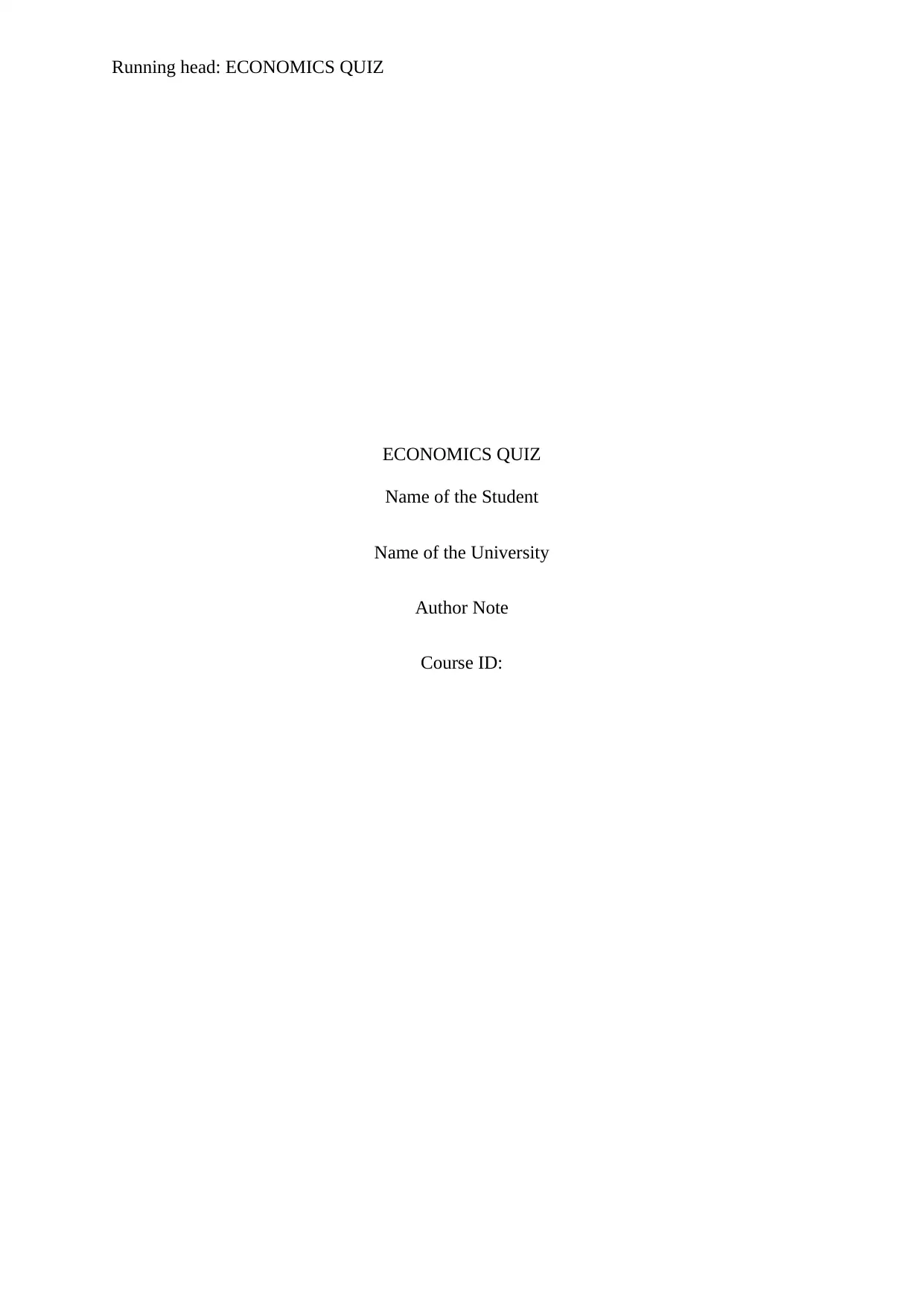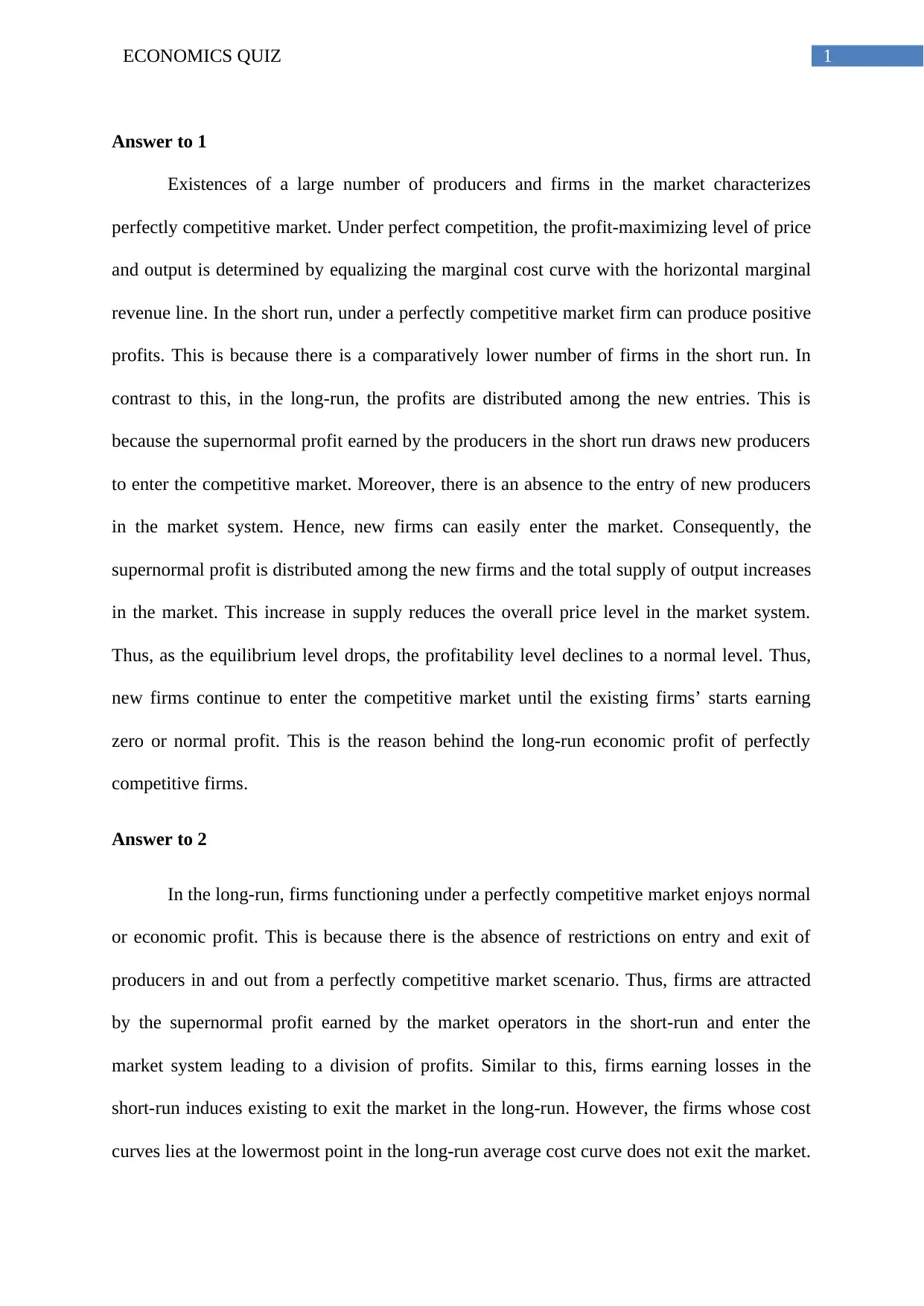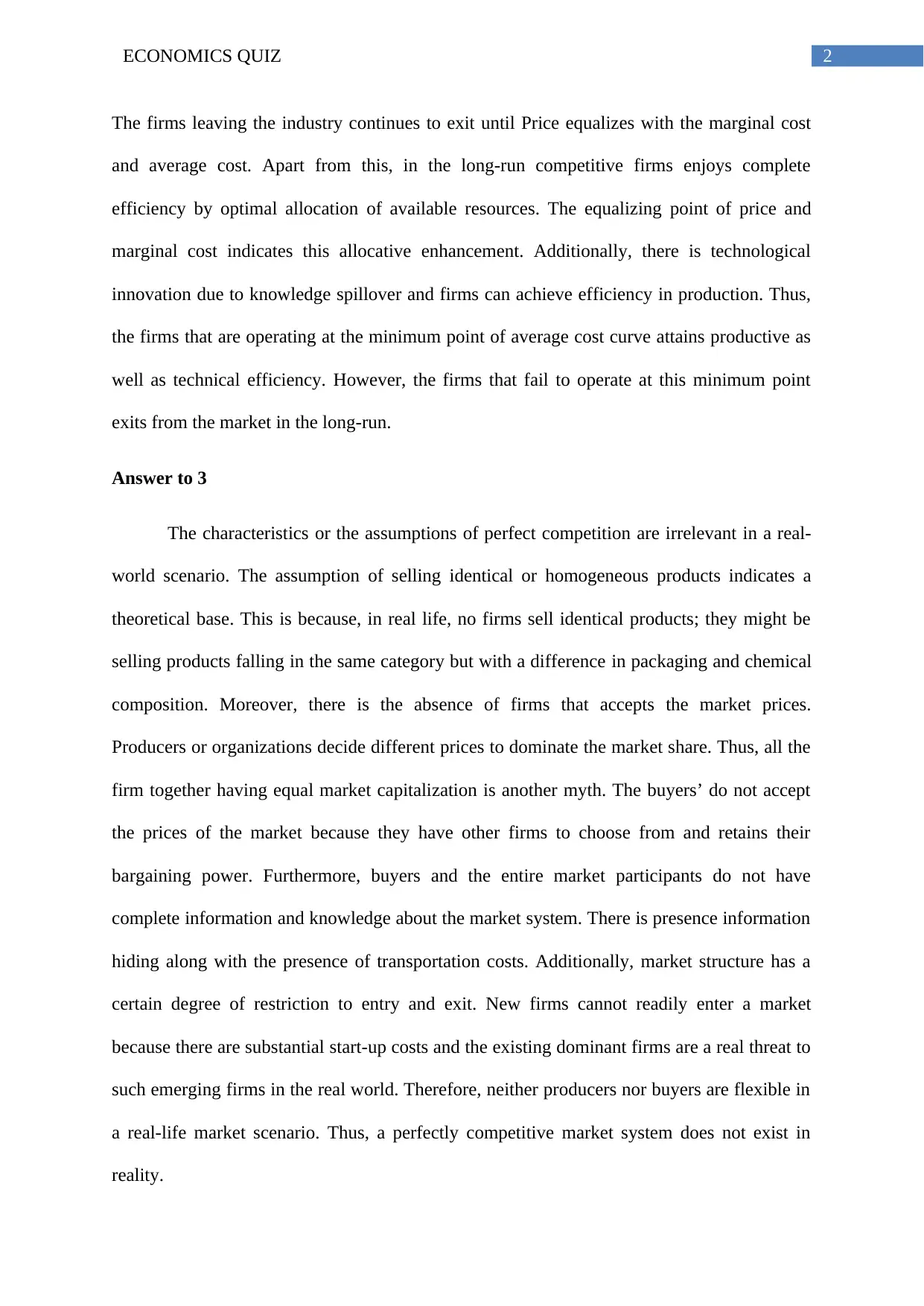Economics Quiz 1: Perfect Competition and Market Dynamics
VerifiedAdded on 2022/08/25
|3
|728
|15
Quiz and Exam
AI Summary
This economics quiz explores the concept of perfect competition, focusing on long-run outcomes. The quiz addresses why perfect competitors cannot earn above-normal profits in the long run, explaining how new firms enter the market, driving profits to zero. It also details the characteristics of long-run equilibrium, emphasizing allocative and productive efficiency, and the absence of barriers to entry. The quiz further examines the theoretical assumptions of perfect competition, contrasting them with real-world market dynamics, and highlighting the limitations of the model. The solutions provided explain how the market adjusts in the long run, leading to normal profits and efficient resource allocation, but also acknowledges the impracticality of perfectly competitive markets in reality due to factors like product differentiation and information asymmetry.
1 out of 3










![[object Object]](/_next/static/media/star-bottom.7253800d.svg)